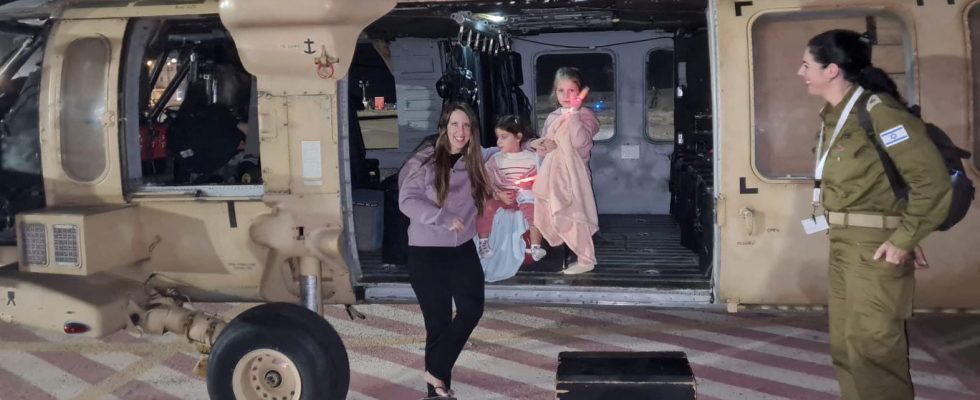Sixty nine. This is the number of Hamas hostages who have been released since Friday November 24. This, thanks to the agreement concluded between Israel and the terrorist organization. Negotiated under the aegis of Qatar, the United States and Egypt, the text has enabled the release, so far, of 69 foreign and Israeli hostages in return for the release of 150 Palestinians held in the jails of the Hebrew State. Mostly residents of the West Bank.
A provision provided for in the text allows the agreement to be renewed. And to proceed with the daily release of around ten hostages in exchange for around thirty Palestinian prisoners.
Thus, since last Friday, exchanges have taken place daily between Gaza and Tel Aviv. This Tuesday, November 28, a source close to the Palestinian Islamist movement indicated that ten new Israeli hostages are preparing to be released. But how exactly do these hostage releases take place?
First step: transmission of the list of hostages
First of all, after ensuring that the truce provided for by the agreement is respected, Hamas transmits a list to the Israeli army on the eve of each liberation. Inside, the names of the hostages that the terrorist movement plans to hand over to the Jewish state.
So far, only women, children and the elderly have been affected. For Wassim Nasr, journalist specializing in terrorism issues, this choice is more a matter of practicality than morality. “We must not forget that these are the most complicated people to keep in terms of logistics,” he explains to the France 24 news channel.
At the same time, an Egyptian delegation is ensuring “respect for the list” of Palestinian prisoners handed over by Tel Aviv to the Palestinian Authority in order to ensure that the terms of the agreement are fully honored.
Second stage: the hostages are transported to Egypt
In the hours that followed, the hostages were handed over to teams from the International Committee of the Red Cross (ICRC). Most of them leaving from the al-Chifa hospital, they then began crossing the Gaza Strip aboard ICRC ambulances.
The humanitarian vehicles head to Egypt where they are then transported to the Rafah border crossing – the only one that does not have direct entry into Israel – before being transferred to Al-Arich airport, 40 kilometers from Rafah to finally fly towards the Hebrew state.
Third step: reception in Israel
On their arrival in Israel, the hostages are welcomed by IDF soldiers, briefed by specialists in order to be able to best reassure the freed children, most of whom find themselves in a state of “stunnedness”. explains on BFMTV Dr Ayelet Noam-Rosenthal, member of the Haruv Institute, specialized in child hostage trauma.
The Haruv Institute in Jerusalem has notably prepared a guide, in which researchers provide some advice to the military. Like simple words and sentences that should allow children to locate themselves in space-time: “I am a soldier of the Israeli forces and I am here to take you home. You are safe.”
Step four: transfer to hospitals
Although no information on deceased relatives must be provided at this stage, it is nevertheless recommended to bring a known object, or to “ensure the presence of familiar faces”, by means of photos for example. As reported by BFMTV, it is up to Israeli soldiers to bring the released hostages the dish of their choice.
In the minutes that followed, the survivors were taken care of by the health authorities, and sent by helicopter or military ambulance to one of the six hospitals in the Jewish state – Soroka, Sheba, Wolfson, Ichilov, Shamir or Schneider – depending on the care. they need, said the director general of the Ministry of Health, Moshe Bar Siman Tov. Taken to their room, the hostages discover a package with personal items or toys. Of course, mothers and children are not separated.
Step five: medical examinations
Medical examinations were quickly carried out on the patients, the majority of whom arrived “weak and exhausted”, underlines the Times of Israel. “We need to check that they do not have any specific medical problems and do physical examinations,” detailed Hagai Levine, head of the medical team at the Hostage Families Forum, on BFMTV. The view, which may have been impaired by the darkness of the Hamas tunnels in which many of them were held, is also controlled.
Before being reunited with their loved ones, the hostages are also examined by psychiatrists and psychologists in order to detect the genesis of trauma caused by some fifty days of captivity. Especially since some of them have not yet been informed of the death of their loved ones.
In addition, the Israeli Health Ministry also demanded that “any signs of torture, rape or other war crimes” be investigated and documented.
Sixth step: reunion
After more than a month spent in grief and fear over the possibility of never seeing each other again, the long-awaited moment arrives. Once the medical examinations have been carried out, families can reunite with their loved ones. A crucial step in “the hostages’ healing process”, insists Hagai Levine on BFMTV.
Questioned by the news channelthe doctor in clinical psychology, specializing in psychotraumatology, Marilyne Baranes, explains that Israel has a “national protocol […] scientifically approved throughout the world” which consists of “dishing people, bringing them out of this glaciation, bringing them back to reality”.
